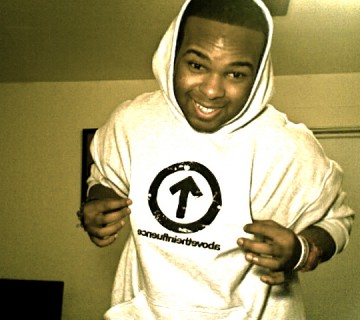Drug Facts
With so many voices and opinions out there, it’s important to understand the facts.
Fact is that while you’re a teen (and even into your early 20’s!), you’re still growing and developing, and drug abuse during these years in particular can have a lasting impact. Another fact to consider: the brain is much more vulnerable to addiction during these years. 90% of Americans with a substance abuse problem started smoking, drinking or using other drugs before age 18.
When it comes to drug use, individual reactions and experiences vary, so it’s important to understand the usual risks and effects, both short- and long-term. Knowledge can be the key to making your own best decisions.
Information provided isn’t to prevent anyone from seeking medical treatment under the advice and care of their doctor. A variety of substances offer potential medicinal value, but that doesn’t negate their risks, especially when abused.
- Adderall
- Alcohol
- Bath Salts
- Benzos
- Cocaine
- DXM
- GHB
- Hallucinogens
- Heroin
- Inhalants
- Ketamine
- LSD
- Marijuana
- MDMA
- Meth
- Mushrooms
- Over-the-Counter
- Prescription Drugs
- Rohypnol
- Salvia
- Spice
- Steroids
- Tobacco & Nicotine
- Xanax
- Adderall
- Alcohol
- Bath Salts
- Benzos
- Cocaine
- DXM
- GHB
- Hallucinogens
- Heroin
- Inhalants
- Ketamine
- LSD
- Marijuana
- MDMA
- Meth
- Mushrooms
- Over-the-Counter
- Prescription Drugs
- Rohypnol
- Salvia
- Spice
- Steroids
- Tobacco & Nicotine
- Xanax

Prescription Drugs
When prescribed for you by a doctor, these medications can be incredibly beneficial. But when taken without a prescription or not as directed – they can become dangerous and addictive. At too high a dose, or when combined with alcohol or other drugs, many prescription drugs can also become deadly.
Prescription drugs are medications legitimately prescribed by doctors to treat a variety of health problems. Some people assume that since they’re legal when prescribed by a doctor, they must be safer than illegal drugs. The truth is, these drugs require a prescription for a reason. When abused, they can be just as dangerous, and even deadly. In fact, in recent years, the abuse of prescription painkillers has resulted in more deaths than cocaine and heroin combined.1
The most commonly abused prescription drugs fall into three categories: Painkillers, Depressants and Stimulants.
PAINKILLERS
AKA
Captain Cody, Cody, sizzurp, lean, syrup, schoolboy, doors & fours, loads, oxy, oxycotton, oxycet, hillbilly heroin, percs
What is it?
Prescription painkillers often contain opioids that are either naturally derived from poppy flowers, or a lab-made, semi-synthetic substitute. These drugs attach to particular sites in the brain called opioid receptors, which carry messages to the brain. When you take prescription painkillers, the message the brain receives is changed, so that pain is no longer perceived as painful.2 These are the same receptors that heroin binds to in the brain.
Under a doctor’s direction, painkillers can be vital in relieving severe pain due to physical damage, cancer or other illnesses.3 Unfortunately, abusing painkillers has become a serious problem.4 The most commonly abused brand-name painkillers include Vicodin, Oxycodone, OxyContin and Percocet. Codeine, an opioid painkiller often found in prescription cough syrup, is also commonly abused.
The Risks
Prescription painkillers are powerful drugs that can be dangerous, or even deadly, especially when taken at high doses or combined with alcohol. A single large dose can cause breathing difficulty that can lead to death. The short-term effects of painkiller abuse can include lack of energy, inability to concentrate, nausea and vomiting.
Long-Term Effects
Because of their effect on the brain, prescription painkillers can be highly addictive when used for non-medical purposes. Even patients who are prescribed painkillers for a long time can develop a “physical dependence,” meaning that the body becomes accustomed to having the drug. Stopping the drug abruptly can cause severe withdrawal symptoms, so, any changes when using these medications must be reported to and carefully monitored by a doctor.5
The Bottom Line
Painkillers are among the most commonly abused prescription drugs. Without a doctor’s prescription and supervision, short- and long-term use of prescription painkillers can lead to dangerous side effects, including accidental overdose. Combining them with alcohol or other drugs increases the risk of death from overdose.
DEPRESSANTS
AKA
Downers, downs, barbs, benzos, reds, red birds, phennies, tooies, yellows, yellow jackets, candy, sleeping pills, tranks, xanies
What is it?
Doctors prescribe depressants to treat a variety of health conditions, like anxiety, panic attacks and sleep disorders. Depressants can be divided into three groups, based on their chemistry and the specific health problem they help address. These groups include barbiturates, which are often prescribed to promote sleep; benzodiazepines, like Valium and Xanax, which are prescribed to relieve anxiety; and new (non-benzodiazepinic) sleep medications, like Ambien and Lunesta, commonly used to treat sleep disorders.6
The Risk
In teens, depressants can cause depression, confusion, exhaustion and irritability. And because they work by slowing the brain’s activity, they can diminish heartbeat and respiration to dangerously low levels. This is especially true when depressants are combined with alcohol or OTC medications. It’s a combination that can even lead to death.
Long-Term Effects
Depressants are highly addictive drugs, and when chronic users or abusers stop taking them, they can experience severe withdrawal symptoms, including anxiety, insomnia and muscle tremors. In fact, going “cold turkey” off of some depressants can have life-threatening consequences, like seizures, convulsions and, in rare instances, death.
The Bottom Line
Depressant drugs can make you depressed, confused and irritable. And addiction increases your chances of more dangerous outcomes, like overdose, slowed breathing and heart rate, and even death.
STIMULANTS
AKA
Uppers, bennies, black beauties, crosses, hearts, truck drivers, JIF, MPH, R-ball, Skippy, the smart drug, vitamin R
What is It?
Prescription stimulants affect the brain through a slow and steady release of two neurotransmitters—dopamine and norepinephrine.7 When prescribed and taken correctly, under medical supervision, these drugs can help treat a few health conditions, including attention-deficit hyperactivity disorder (ADHD), narcolepsy and, occasionally, depression.
In treating ADHD, prescription stimulants can help regulate and normalize the dopamine and norepinephrine function in the brain, so a patient with this condition can focus better and pay more attention. Common brand-name prescription stimulants include Adderall, Ritalin, Dexedrine, and Benzedrine.8
The Risk
Abusing drugs that are prescribed to treat specific medical conditions is never a good idea. And without a doctor’s supervision or monitoring, side effects can become harmful, or even dangerous. Excessive vomiting, tremors, sweating and anxiety are just some of the risks of abusing stimulants.
When taken at high doses, with alcohol or with over-the-counter (OTC) medicines, stimulants can cause irregular heartbeat, dangerously high body temperatures and the potential for seizures or heart failure.9
Long-Term Effects
Stimulants can be addictive.10 The more you take, the easier it is to get hooked. When stimulants are taken over a long period of time, stimulant abusers run the risk of developing suicidal or homicidal tendencies, paranoia and cardiovascular collapse.11
The Bottom Line
Some people mistakenly believe that prescription stimulants can give them energy, help them focus and help them perform better in school. But if you haven’t been diagnosed with a condition that requires taking these drugs, and aren’t taking them under a doctor’s supervision, stimulant abuse can lead to side effects that are both dangerous and deadly.
- Centers for Disease Control and Prevention. Policy Impact: Prescription Painkiller Overdoses.
Retrieved May 2013.
View Source [↩] - National Institute on Drug Abuse. Mind Over Matter: Prescription Drug Abuse.
Retrieved July 2011.
View Source [↩] - National Institute on Drug Abuse. Mind Over Matter: Prescription Drug Abuse.
Retrieved July 2011.
View Source [↩] - National Institute on Drug Abuse. Prescription Drugs.
Revised December 2012. Retrieved May 2013.
View Source [↩] - National Institute on Drug Abuse. Prescription Drugs: Abuse and Addiction.
Retrieved July 2011.
View Source [↩] - National Institute on Drug Abuse. Prescription Drugs: Abuse and Addiction.
Retrieved July 2011.
View Source [↩] - National Institute on Drug Abuse. Prescription Drugs: Abuse and Addiction.
Retrieved July 2011.
View Source [↩] - National Institute on Drug Abuse. Prescription Drugs: Abuse and Addiction.
Retrieved July 2011.
View Source [↩] - National Institute on Drug Abuse. Prescription Drugs: Abuse and Addiction.
Retrieved July 2011.
View Source [↩] - National Institute on Drug Abuse. Prescription Drugs: Abuse and Addiction.
Retrieved July 2011.
View Source [↩] - National Institute on Drug Abuse. Prescription Drugs: Abuse and Addiction.
Retrieved July 2011.
View Source [↩]







